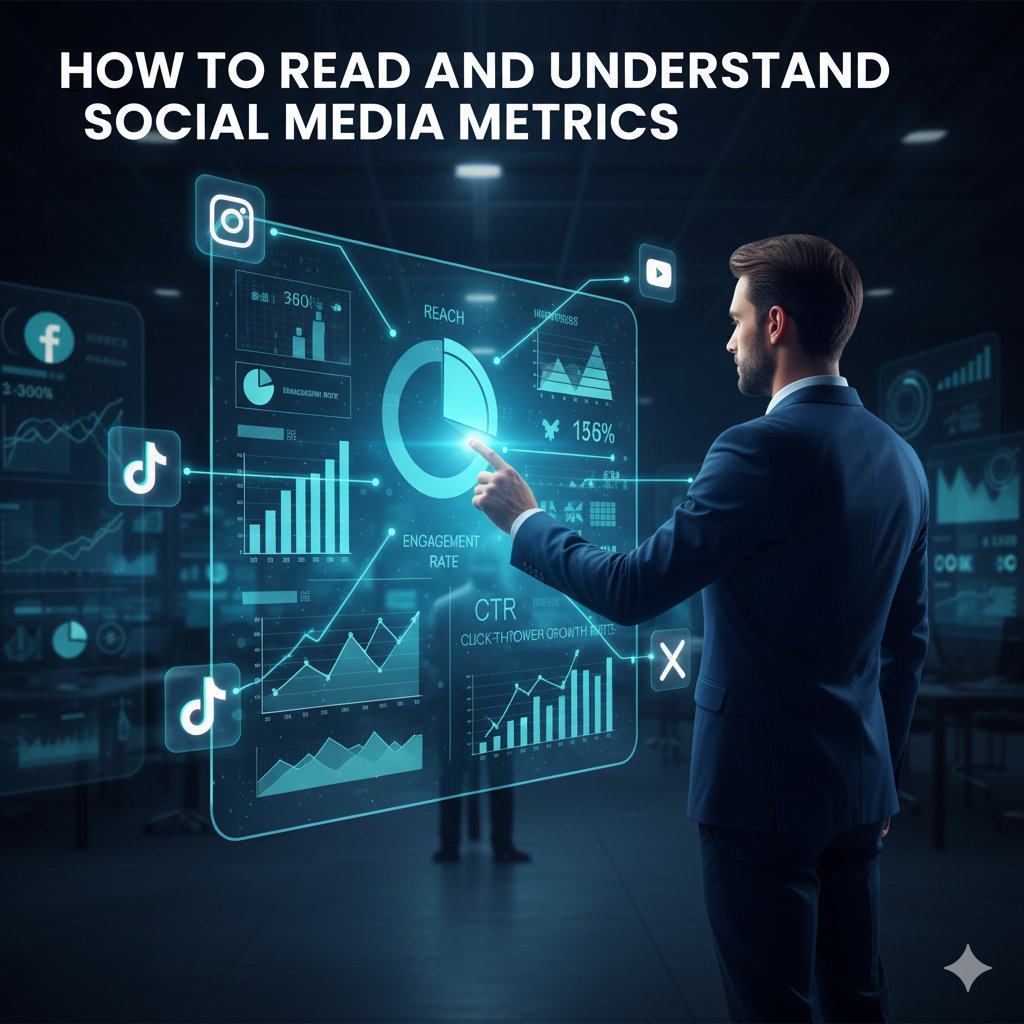
How to Read and Understand Social Media Metrics
Introduction
In digital marketing, numbers tell the real story. Understanding social media metrics is the key to optimizing your content strategy, improving engagement, and achieving business goals. But for many marketers, terms like reach, impressions, or engagement rate can be confusing. This guide breaks down the most important metrics and shows you how to read them effectively.
1. Reach vs. Impressions – Know the Difference
- Reach: The total number of unique users who saw your content.
- Impressions: The total number of times your content was displayed, even if it was shown multiple times to the same person.
👉 Example: If 1,000 people see your post and each sees it twice, your reach is 1,000 but impressions are 2,000. 👉 Use it to measure brand awareness and visibility.
2. Engagement Metrics – Measuring User Interaction
- Likes/Reactions: Show how many people responded positively to your post.
- Comments: Indicate interest, conversation, or emotional response.
- Shares: Amplify your content beyond your original audience.
- Saves: Show deeper interest — especially important on platforms like Instagram or TikTok.
👉 High engagement means your content resonates with your audience.
3. Engagement Rate – Quality Over Quantity
Engagement rate shows how well your content performs relative to the size of your audience.
- Formula: Engagement Rate = (Total Engagement ÷ Total Reach) × 100
- A higher rate means your audience is more active and connected to your content. 👉 Tip: A post with fewer impressions but higher engagement rate may be more valuable than a viral post with low interaction.
4. Click-Through Rate (CTR)
- CTR measures how many people clicked on a link compared to how many saw the post.
- High CTR indicates strong call-to-action or compelling content. 👉 Ideal for tracking conversions and website traffic from social platforms.
5. Watch Time & Completion Rate (Video Metrics)
For video content, these two metrics matter most:
- Watch Time: How long users spend watching.
- Completion Rate: The percentage of people who watched your video to the end. 👉 High completion rates signal strong storytelling or engaging visuals.
6. Follower Growth & Retention
- Tracking growth helps you understand your audience expansion.
- Retention shows how loyal your audience is over time. 👉 Sudden drops can indicate irrelevant content or reduced engagement.
7. Conversion & ROI Metrics
At the end of the funnel, you must know:
- Conversions: Number of people who took the desired action (purchase, sign-up, etc.)
- Cost per Conversion (CPC): How much you spent per successful action. 👉 These metrics reveal how well your SMM translates into real business results.
8. Interpreting Metrics in Context
Metrics alone don’t tell the full story — context is everything.
- Compare data over time (weekly, monthly, quarterly).
- Benchmark against competitors or industry standards.
- Align metrics with goals (awareness vs. engagement vs. sales).
👉 A spike in reach is good, but without engagement, it may not drive results.
✅ Conclusion
Mastering social media metrics empowers you to make data-driven decisions. Instead of guessing what works, you can identify what resonates, adjust your strategy, and grow faster.
📌 Visit Us: STABLESMP.COM
Suggested Keywords:
- Stable SMP
- social media panel
- SMM services
- social media marketing
- SMM reseller panel
- buy social media services
- social media growth
- increase social media engagement
- social media management
- affordable SMM panel
Date: 13/10/2025